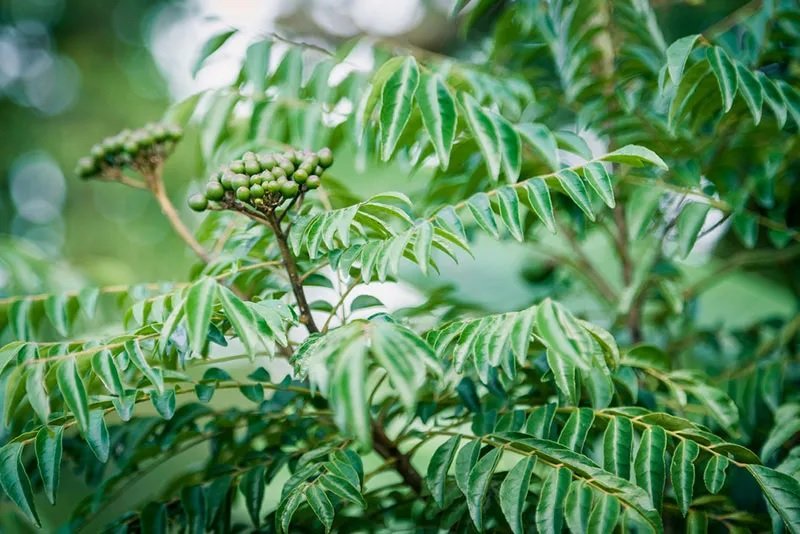Curry leaves are cultivated as sweet neem. Its plant is also like bitter neem. But like neem leaves, the edge of its leaves is not cut. Its plant is 15 to 20 feet high. Only the leaves of sweet neem are used. Therefore its plants are allowed to grow only up to 2 metres. When flowers start appearing on their plants, during that time, the growth of the plant stops.
For this reason, it has been kept in the spices and medicinal plants category. Its leaves are dried, and its powder is prepared, which can be stored and used for a long time. Tiny white fragrant flowers come out on its plants, in which the seeds formed are poisonous. Therefore, they should never be eaten. It’s completely grown plant gives a yield of 10 to 15 years.
Soil, Climate and Temperature
Clay black fertile soil is required for the cultivation of Kadhi. Its cultivation can be done quickly in irrigated places. However, its cultivation should not be done on waterlogged land. The P.H. of the land in its cultivation. The value should be between 6 and 7. Also, rotary tiller implement is best for breaking the clods.
Its plants require less rainfall, and the frost falling in winter causes more damage to its plants. These plants need an average temperature to grow well. Its plants can tolerate a maximum temperature of 40 degrees and a minimum of 10 degrees.
Field Preparation & Fertilisers
The fully grown plant of curry gives yield for 10 to 15 years, so its field should be prepared well. For this, first of all, after deep ploughing the area, the remains of the old crop in the field are destroyed and removed. After this, leave the field open for some time. Due to this, the area’s soil gets good sunlight, and the harmful insects present in the soil are destroyed. For land preparation those tractor work whose tyre durability is strong in soil like JK tractor tyre because it comes with many advanced features.
After this, the pits are prepared to keep a distance of three to four meters in the field. These pits are ready in the form of a row, and an average length is maintained between each row. If you want, you can also use organic manure instead of natural manure. These pits are prepared by adding compost to the soil 15 days before transplanting. After this, when the plant becomes three months old, during that time, two to three kg of organic manure has to be given to the plants.
Method for Sowing
Curry seeds are planted in the form of sources. Apart from this, it can also be produced through a pen, but farmer brothers prefer to transplant it through seed. About 70 kg of seeds is required in one acre of field. Sowing seeds is done in the prepared pits at a distance of 3 to 4 meters in the area. Before planting the seeds, they are treated by keeping them in cow urine for two to three hours. After this, the roots are buried in the pits to 3 to 4 cm depth.
Irrigation
The first irrigation of curry plants is done immediately after sowing seeds. After this, moisture is needed in the pits when the seeds start to germinate, for this water should be kept for two to three days. After this, when the seeds germinate and take the form of a plant, they must be watered once a week. In the rainy season, if it is raining from time to time, they need regular irrigation, and in the winter season, water should be given only when needed.
Weed Control
The weeding method is used to control weeds in curry plants. Its plants require only four to five hoeing. Its first weeding is done one month after seed sowing, and the second weeding is done after two months. The rest of the weeding is done one month after each weeding.
Harvesting
The curry plants are ready for harvesting after seven months of sowing the seeds. The first cutting of its plants is done from half feet height. Three months after the first harvest, its leaves are ready for harvesting again. They are cut before the flowers are formed on their plants because the growth of the plant stops due to the formation of flowers. After harvesting the leaves, they are collected and dried in a shady place. After drying the leaves correctly, it is made into powder or sent to sell in the market like this. Its plant can be harvested four times a year.
Stay with us for more similar information.

